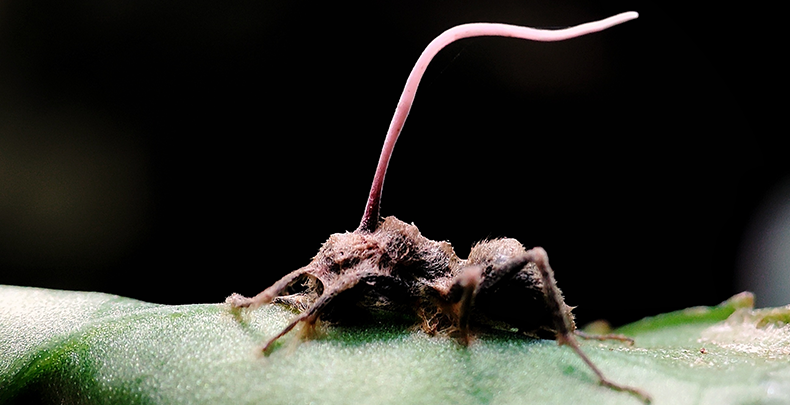Published: 09/05/24 11:27 Categories: Microbiology
Whether intentionally or not, narratives have a strong educational component, and this is no less true for a topic like Microbiology.
From its early days in theater, later in cinema, and nowadays with TV series, which have taken up the torch of storytelling. Like its predecessors, it has treated infection as a constant that transcends the individual and reaches into the social realm.

As of the writing of this article, on the film portal IMDB, we can find: 22,528 titles related to the keyword “Virus”, 191 titles related to the keyword “Bacteria,” or 22,925 titles related to the keyword “Pandemic.” Among these titles, some are very well known to the general public such as: I Am Legend (2007), The Return of the Living Dead (1978) or The Walking Dead (2010).
Microbiology in The Last of Us
The latest title to join this group has been The Last of Us (2023), in this case, it deals with a fictional fungal pandemic, but inspired by a real parasite, Ophiocordyceps unilateralis, a parasitoid ascomycete fungus from the Clavicipitaceae family that infects ants, commonly known as the zombie fungus.
Once the ant has been infected by the fungus, it is capable of altering its nervous and muscular systems. The method by which these modifications are produced is not yet clear, but it is believed to be due to the secretion of bioactive compounds that interfere with the nervous system and directly control the muscles of the ant, thus being able to guide it in search of light to the highest parts of plants and trees where they are digested from the inside by the fungus, and once it has digested its host, it releases its spores.

Following this new television success of microbiology, many have wondered if such a situation could be possible; experts classify it as extremely remote, as this parasite has not evolved to infect mammals, and they assure that millions of years of evolution would be necessary for this situation to be possible.
However, we cannot ignore other pathogenic fungi that can be dangerous to humans such as some species of the genus Candida, like Candida albicans, Candida parapsilosis, or Candida auris.
In recent years there has been an increase in the number of diseases caused by fungal infections and greater resistance to the antifungals available to modern medicine.
For this reason, the need to increase research on fungal pathogens and potential therapies for them is ever-growing, potentially preventing a cinematic situation.

 Food fraud: How do we detect it?
Food fraud: How do we detect it?
 Visit Us at MEDICA 2025 – Discover Our Precise Detection Solutions
Visit Us at MEDICA 2025 – Discover Our Precise Detection Solutions
 PCR: The Technique Revolutionizing Rapid Detection in the Food Industry
PCR: The Technique Revolutionizing Rapid Detection in the Food Industry
 How Culture Media Ensure the Safety, Efficacy, and Quality of Medicines
How Culture Media Ensure the Safety, Efficacy, and Quality of Medicines
 Meeting us at MEDLAB MIDDLE EAST 2025
Meeting us at MEDLAB MIDDLE EAST 2025